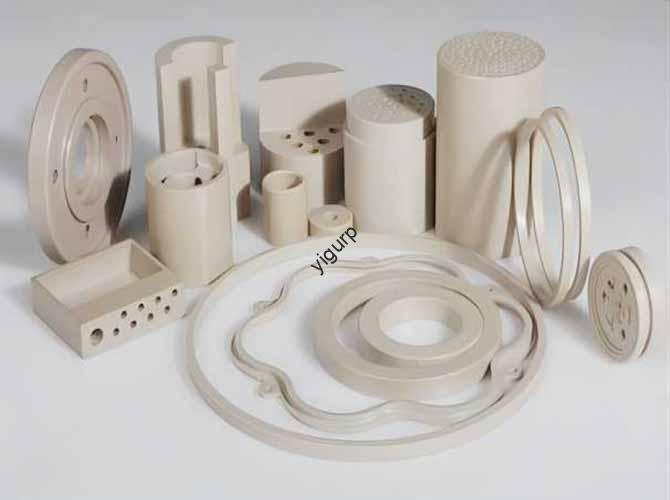Ever found yourself stuck in product development—waiting weeks for a prototype, overspending on materials, or struggling to test complex designs? 3D printing solid prototypes sind die Lösung. These physical, fully formed models transform how teams validate designs, Kosten senken, und beschleunigen. Unten, we break down their core benefits, reale Verwendungen, step-by-step production, and how to avoid common pitfalls.
1. Kernvorteile: Why 3D Printing Solid Prototypes Beat Traditional Methods
Was macht aus 3D printing solid prototypes a game-changer? The table below compares them to traditional prototyping (CNC -Bearbeitung, manual making) to highlight clear advantages:
| Benefit Category | 3D Printing Solid Prototypes | Traditionelles Prototyping (CNC/Manual) |
| Produktionsgeschwindigkeit | 1–3 days for complex designs (Z.B., Kfz -Teile) | 2–4 weeks for the same complexity |
| Kosteneffizienz | 50–70% lower material waste; no tooling fees | 20–30% material waste; expensive tooling ($500+) |
| Designflexibilität | Handles internal cavities, gute Details (0.1mm Präzision) | Kämpfe mit komplizierten Formen; begrenzt durch Werkzeug |
| Wiederholbarkeit | Konsistente Ergebnisse (± 0,05 mm Toleranz) across batches | Variability from manual labor or tool wear |
| Small-Batch Suitability | Ideal for 1–100 units; no setup cost increases | Costly for small runs (tooling fees don’t scale) |
2. Schlüsselanwendungen: Solving Problems Across Industries
3D printing solid prototypes aren’t just for “testing”—they solve unique challenges in three critical sectors:
A. Industriedesign (Automotive/Aerospace)
Engineers need to validate part fit and function before mass production. Zum Beispiel:
- An automotive team used 3D printing solid prototypes to test a new engine bracket design. Traditional CNC would have taken 3 Wochen und \(2,000 in tooling—3D printing delivered 5 Prototypen in 2 Tage für \)300 gesamt.
- Ergebnis: They identified a stress point early, vermeiden a $50,000 recall later.
B. Unterhaltungselektronik
Brands prioritize ergonomics and user experience. A smartphone maker:
- Gedruckt 10 solid prototypes of a new phone case (using SLA technology) to test grip and button placement.
- Used feedback to adjust the case’s curve—reducing user hand fatigue by 30% (per user testing).
C. Ausbildung
Teachers struggle to make complex concepts tangible. A university:
- 3D printed solid prototypes of human bones and gear systems for engineering/biology classes.
- Student comprehension scores improved by 45% (vs. textbook-only learning), as students could touch and disassemble models.
3. Step-by-Step Production Process: How to Make a 3D Printed Solid Prototype
Erstellen a 3D printed solid prototype is straightforward—follow this linear, actionable workflow:
- 3D Modellierung: Verwenden Sie Software (Solidworks, Fusion 360) to design a digital model. Focus on:
- Adding clear dimensions (Z.B., “100mm length, 5mm wall thickness”).
- Marking support structures for overhangs (angles >45° need support).
- Tech & Materialauswahl: Choose based on your needs:
| 3D Printing Tech | Am besten für | Materialien verwendet |
| SLA (Stereolithikromographie) | Gute Details (Z.B., Schmuck, Elektronik) | Harze (ABS-ähnlich, flexibel) |
| FDM (Modellierung der Ablagerung) | Durable parts (Z.B., Klammern) | PLA, Petg, Nylon |
| Sls (Selektives Lasersintern) | Hitzebeständige Teile (Z.B., Motorkomponenten) | Polyamid (Nylon), glass-filled composites |
- Drucken & Nachbearbeitung:
- Upload the model to the printer, set parameters (Schichthöhe: 0.1–0,2 mm), und fangen Sie an zu drucken.
- Nach dem Drucken: Stützen entfernen, sand the surface (Für die Glätte), and paint if needed (Z.B., for visual prototypes).
4. Common Pitfalls & How to Avoid Them
Even great 3D printing solid prototypes can fail—here’s how to fix top issues:
| Pitfall | Ursache | Lösung |
| Weak part structure | Dünne Wände (<1mm) or lack of support | Increase wall thickness to 1.5–2mm; add support for overhangs >45° |
| Raue Oberfläche | High layer height (>0.2mm) | Use 0.1mm layer height; sand with 400-grit sandpaper post-print |
| Dimensional inaccuracies | Printer calibration issues | Calibrate the printer’s bed level and filament flow before printing |
5. Perspektive der Yigu -Technologie
Bei Yigu Technology, Wir sehen 3D printing solid prototypes as the backbone of fast, smart product development. We’ve helped clients cut prototyping time by 60% using our optimized SLA/FDM printers and high-performance materials (Z.B., heat-resistant resins for industrial parts). We also offer custom workflows—for example, a medical client used our SLS service to print biocompatible prototypes, accelerating their device’s FDA approval by 3 Monate. Für uns, it’s not just about printing parts—it’s about helping you solve problems faster.
FAQ
- What’s the maximum size of a 3D printed solid prototype?
Most desktop printers handle up to 300x300x300mm. Für größere Teile (Z.B., Kfz -Stoßstangen), we use industrial printers (1000x1000x1000mm) or print in sections, dann versammeln.
- How long do 3D printed solid prototypes last?
Es hängt vom Material ab: PLA prototypes last 6–12 months (good for testing), while nylon/SLS prototypes last 2–3 years (suitable for long-term use).
- Can 3D printed solid prototypes be used for functional testing (Z.B., Stresstests)?
Yes—choose durable materials like nylon or PETG. Zum Beispiel, a nylon prototype can withstand 500+ cycles of bending (simulating real use) ohne zu brechen.
